- News
- Reviews
- Bikes
- Components
- Bar tape & grips
- Bottom brackets
- Brake & gear cables
- Brake & STI levers
- Brake pads & spares
- Brakes
- Cassettes & freewheels
- Chains
- Chainsets & chainrings
- Derailleurs - front
- Derailleurs - rear
- Forks
- Gear levers & shifters
- Groupsets
- Handlebars & extensions
- Headsets
- Hubs
- Inner tubes
- Pedals
- Quick releases & skewers
- Saddles
- Seatposts
- Stems
- Wheels
- Tyres
- Tubeless valves
- Accessories
- Accessories - misc
- Computer mounts
- Bags
- Bar ends
- Bike bags & cases
- Bottle cages
- Bottles
- Cameras
- Car racks
- Child seats
- Computers
- Glasses
- GPS units
- Helmets
- Lights - front
- Lights - rear
- Lights - sets
- Locks
- Mirrors
- Mudguards
- Racks
- Pumps & CO2 inflators
- Puncture kits
- Reflectives
- Smart watches
- Stands and racks
- Trailers
- Clothing
- Health, fitness and nutrition
- Tools and workshop
- Miscellaneous
- Buyers Guides
- Features
- Forum
- Recommends
- Podcast
TECH NEWS
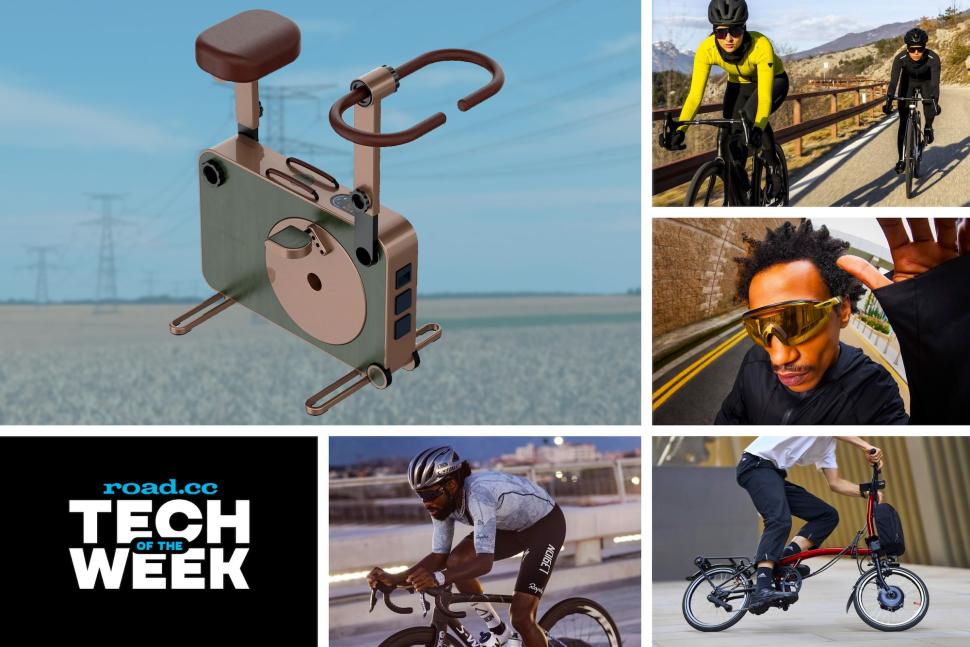 2023 October 21 Tech of the Week - 1
2023 October 21 Tech of the Week - 1Go for a ride, power your home: check out the indoor bike that turns your exercise into electricity - plus more new stuff from Oakley, Rapha, Brompton, Pinarello, and loads more
It has been a big week for lovely new bike stuff with autumn clothing arriving from Rapha, Pinarello and Café du Cycliste, glasses from Oakley, and updated colours from Brompton, but we’re starting with news of an indoor bike that harnesses your pedal power for use in the home…
Go for a ride, power your home: check out the indoor bike that turns exercise into electricity
A new exercise bike has been launched that allows you to generate electricity as you pedal, store that energy, and then use it to help power your home. Startup Tukas EV says that its HR Bank’s 2 kWh battery can keep the fridge going for three days, power 123 smartphones, or make 150 cups of coffee.
It might have crossed your mind when riding on a trainer that you’re producing a whole lot of energy that could be put to good use. Lithuania’s Tukas EV has decided to harness cycling energy for use elsewhere.
“HR Bank, at first glance resembling a classic exercise bike, on average can generate from 50 to 300W/h of electricity by pedalling,” says Tukas EV. “Fifteen minutes of pedalling is enough to fully charge a smartphone, while one hour of physical exercise fully charges a laptop.”
HR Bank can also store energy from the electricity grid, a car generator, solar panels, or wind power. It can be connected to any output device, from a kettle to a microwave.
Jonas Navickas, CEO of Tukas EV, says that the main aim of the HR Bank is to help create a greener planet.
“Humans waste countless amounts of energy, while natural resources are extremely limited,” he says. “The idea was that a person who bought an HR bank could not only use it as an external battery, charged from the sun or the grid, but in the absence of an external power source, could generate energy while pedalling. Not only does exercising take care of one's health, but it is also a step towards a more sustainable future.”
The desire to help people become more independent of external energy suppliers also played a part in the development of HR Bank.
“When the war in Ukraine started, I was shocked by the sight of people with many extension cords trying to get electricity from one power generator to charge their phones,” said Jonas Navickas. “We also thought about unpredictable natural disasters that leave people without electrical power for days or even months. Consequently, the idea of HR Bank was born.”
HR Bank comes in a range of colours, materials and finishes with prices starting at €2,964 (around £2,590) – so you’d need to generate a whole lot of electricity before you start moving into profit.
The seat (it’s not really a saddle, is it?) and pedals don’t look at all suitable for serious cycling but what do you think of the concept? Does the idea of channelling pedal power for use in your home make sense to you? Let us know what you think in the comments.
Box-fresh Encoder Extension eyewear from Oakley
Oakley has introduced two new Encoder Extension glasses to sit alongside its existing Encoder. The glasses were worn by Sepp Kuss when he was crowned Vuelta a España champion last month.
“The Encoder Ellipse and Encoder Squared frames re-envision the original Encoder lens shape, enhanced by functional venting that provides a fresh and unique look,” says Oakley.
That really is a big ol’ vent across the top of the lens.
> Take a look at the best cycling sunglasses 2023
Our reviewer Jamie Williams rated the Encoders highly last year, although he said that the price was high.
> Check out our review of the Oakley Encoder sunglasses
The Encoder Extension glasses use similar Prizm Lens Technology, meaning that they’re designed to enhance colour and contrast.
Both the Encoder Ellipse and the Encoder Squared are priced at £219.
Rapha unveils its “most advanced race-ready jersey” – and it’s reversible
Rapha has introduced what it describes as “the most advanced race-ready jersey” it has ever made – and it’s reversible.
Rapha says the Pro Team Reversible Crit Jersey, designed with L39ION of Los Angeles, is “the ultimate less-is-more piece of kit for riders who want the very best when they race and train”.
The Legion-branded ‘training side’ features rear pockets for carrying your ride essentials, while the ‘race side’ is logo-free with no pockets, designed to keep drag to a minimum.
The jersey features a reversible zipper and silicone grippers on both sides of the hem.
Legion’s Chapter 3 team issue kit is now available in limited quantities for men, and will be made to order for women.
The Pro Team Reversible Crit Jersey is priced at £200.
Do you like Brompton’s new colours for 2024?
If you’ve been humming and hawing about buying a Brompton folding bike, maybe the new colours for 2024 will tempt you.
The London-based company has announced a whole load of new colour options, the pick of the bunching this Flame Lacquer finish that you can get on the P Line and P Line Electric.
> Read our review of the Brompton C Line Explore
“Like molten copper, this red-coloured lacquer changes from light to dark as it moves,” says Brompton. “The hand-brazed steel welds are visible through the lacquer finish.”
We also like the Yuzu Lime finish that’s available on the C Line and Electric C Line.
Pinarello debuts winter clothing range
Bike brand Pinarello – home to the upmarket bikes ridden by Ineos Grenadiers – has introduced a new range of winter clothing. Made entirely in Italy, it’s available in men’s and women’s cuts.
The Winter Jacket (£285) and Winter Jersey (£240) both feature Pinarello’s own water-repellent M-Brain fabric while also benefitting from a DWR (durable water repellent) treatment.
The Thermal Jersey (£199) is designed to offer an aero fit while being breathable.
> Check out our first ride report on the Pinarello Dogma X
The range also includes Winter Bib Shorts (£210), base layers, arm/leg warmers, and various accessories.
Café du Cycliste updates Atelier clothing for the off-season
Sticking with clothing, France’s Café du Cycliste has introduced a new line-up for autumn/winter in its short-run Atelier collection.
Want to guess what the pattern is based on? I’m confident that everyone went with ‘a microscopic cross-section of the gemstone onyx’. Or are you kicking yourself now.
This design has been applied to three road bike styles. The Ines thermal gilet (€205/£201) comes with Polartec Alpha insulation, the Gaella windbreaker jacket (€160/£157) is designed to be super-light and packable into a small pocket, and the Alexine long sleeve jersey (€190/£186) has a micro-brushed inner and is intended to be ultra-breathable.
Fancy this funky French finish?
Pics: Greenleaves Cycling/Rory Hitchens
Speaking of Atelier, check out this bike from France’s L’Atelier Des Velos – which translates as ‘The Bicycle Workshop’ – which we spotted at last weekend’s Bespoked Handmade Bicycle Show in Dresden, Germany.
> Check out 10 stunning bikes from Bespoked Handmade Bicycle Show
They’ve not held back on that finish, extending it to cover the handlebar, stem, racks, mudguards… Even the pump and bottle cages have the same treatment.
L’Atelier Des Velos’ bike with the Café du Cycliste Atelier clothing? That might be going a bit far.
Supersapiens glucose monitoring system launches Apple Watch display
The Supersapiens glucose monitoring system that we reviewed earlier in the year can now give you real-time readings on an Apple Watch.
When reviewing the system, our man Jamie praised its glitch-free performance and said it taught him a lot about his personal nutrition strategy.
> Read our review of the Supersapiens Glucose Monitoring System Subscription (Monthly)
If you're already a user, Supersapiens says that the Apple Watch integration mirrors the glucose reading, animation, and trend arrow of the mobile app.
Ride the Giro d’Italia 2023 on Bkool
Indoor cycling platform Bkool has introduced a new virtual edition of the Giro d’Italia.
“Not only will all the fans taking part in the event be able to recreate the routes of the Giro stages, but they will also have the opportunity to do so with special guests such as Chris Froome, Alberto Contador, Óscar Freire, Remco Evenepoel or the other stars of the Soudal-Quick-Step team,” says Bkool.
> Find out how to get started with Bkool
Complete all the stages and you’ll be eligible to take part in a draw for all sorts of prizes provided by event sponsors, including Castelli and Technogym.
Prologo redesigns Nago R4 saddle range
Italy’s Prologo has redesigned its popular Nago saddle range for the first time since 2016, and here's a quick video to tell you what's going on...
“The design of the Nago R4 is innovative and aerodynamic, the weight is reduced to a minimum and its 245x137mm dimensions are compact,” says Prologo. “The traditional T-shape allows good freedom of movement, while the slightly advanced anatomical centre grants a more aggressive riding position. The ergonomic semi-round shape facilitates the forward rotation of the pelvis, allowing you to effortlessly reach the handlebar.”
The range includes uppers both with and without central cutouts (‘PAS’ is Prologo’s term that denotes a large central channel).
> Best road bike saddles 2023 — here are the top bike seat picks for every budget
The Nago R4 and Nago R4 PAS, with widths of 137mm, are the narrowest saddles in Prologo’s collection. As the names suggest, the Nago R4 147 and Nago R4 147 PAS are 147mm wide; these have 3mm more padding at the top.
All Prologo Nago R4 saddles have a long carbon fibre-injected base and each is available with either Nack (nano carbon fibre, £200) or TiroX (light steel, £122) rails.
The lightest model in the range is the Nago R4 PAS in a 137mm width. The version with Nack rails is a claimed 138g.
Ere Research debuts Explorator GCR40 workhorse wheelset
Ere Research has released a new Explorator GCR40 wheelset “specifically designed to be extra strong and sturdy for everyday use and road training”.
The wheelset, which succeeds the Explorator GC45, uses 40mm aero profile rims made from heat-treated niobium alloy. They are tubeless-ready and have a 21mm internal width, and Ere Research says that the 9mm inner drop makes tyres easy to install.
> The magnificent 7 upgrades to boost performance, comfort and bling up your bike
You get straight-pull Sapim Leader spokes and the rear hub uses a 4-pawl ratchet system. Freehub bodies for Shimano HG/Micro Spline, SRAM XDR and Campagnolo/Ekar are available. Ere Research claims weights of 1,023g (rear) and 861g (front).
The Ere Research Explorator GCR40 wheelset is priced at €499 (around £435).
In case you missed it earlier in the week…
- Merida launches all-new Silex - a world-championship-winning gravel bike
- Best gravel bikes 2023 — adventure-ready rides for leaving the tarmac behind
- Pi-Pop – the e-bike without a battery
- Why has gravel bike brand Lauf reinvented the road bike? New Úthald model is "aero where it makes sense" with 35mm tyre clearance
- The uh-oh, autumn’s here edition! Five cool things coming soon from Karcher, Trek, Wahoo, Santini, and GripGrab
- Best road bike wheels 2023 — transform your road bike with some shiny new hoops
- Check out 10 stunning bikes from Bespoked Handmade Bicycle Show
Mat has been in cycling media since 1996, on titles including BikeRadar, Total Bike, Total Mountain Bike, What Mountain Bike and Mountain Biking UK, and he has been editor of 220 Triathlon and Cycling Plus. Mat has been road.cc technical editor for over a decade, testing bikes, fettling the latest kit, and trying out the most up-to-the-minute clothing. He has won his category in Ironman UK 70.3 and finished on the podium in both marathons he has run. Mat is a Cambridge graduate who did a post-grad in magazine journalism, and he is a winner of the Cycling Media Award for Specialist Online Writer. Now over 50, he's riding road and gravel bikes most days for fun and fitness rather than training for competitions.
Latest Comments
- Rendel Harris 2 sec ago
Nobody "deserves" to be spat on, be they riders, fans or anyone else. Saying that riders shouldn't spit on spectators isn't demanding they act like...
- Another_MAMIL 10 hours 58 min ago
Q36.5 Gregarius Essential Bib Knickers fit the bill: 3/4 length bib tights for warm weather.
- Rendel Harris 11 hours 8 min ago
Jolly good. Only it hasn't been and it is still a public bridleway. Feel free to look it up.
- jaymack 11 hours 58 min ago
"...it feels more like a £100+ jersey". It's almost as if cycling apparel is over priced.
- mike the bike 13 hours 11 min ago
I've had a few Lezyne bits and bobs over the years and while it's true I've never bothered to return anything under warranty, I've had a couple of...
- mark1a 12 hours 14 min ago
There's a transition period. For the benefit in kind (BIK) tax to the employee, it will be treated as a goods vehicle as it is now (rather than a...
- hawkinspeter 13 hours 22 min ago
Parents say East Bristol Liveable Neighbourhood makes roads '100 times safer' for children:...
- mdavidford 13 hours 28 min ago
Isn't basically all carbon recycled? From stars?
- velodinho 14 hours 44 min ago
As witnessed at so many infrastructure improvement projects similar to this one, all those who object should ignore the consultation and pray at...
- Nagai74 16 hours 32 min ago
It's a DLO to those in the trade.
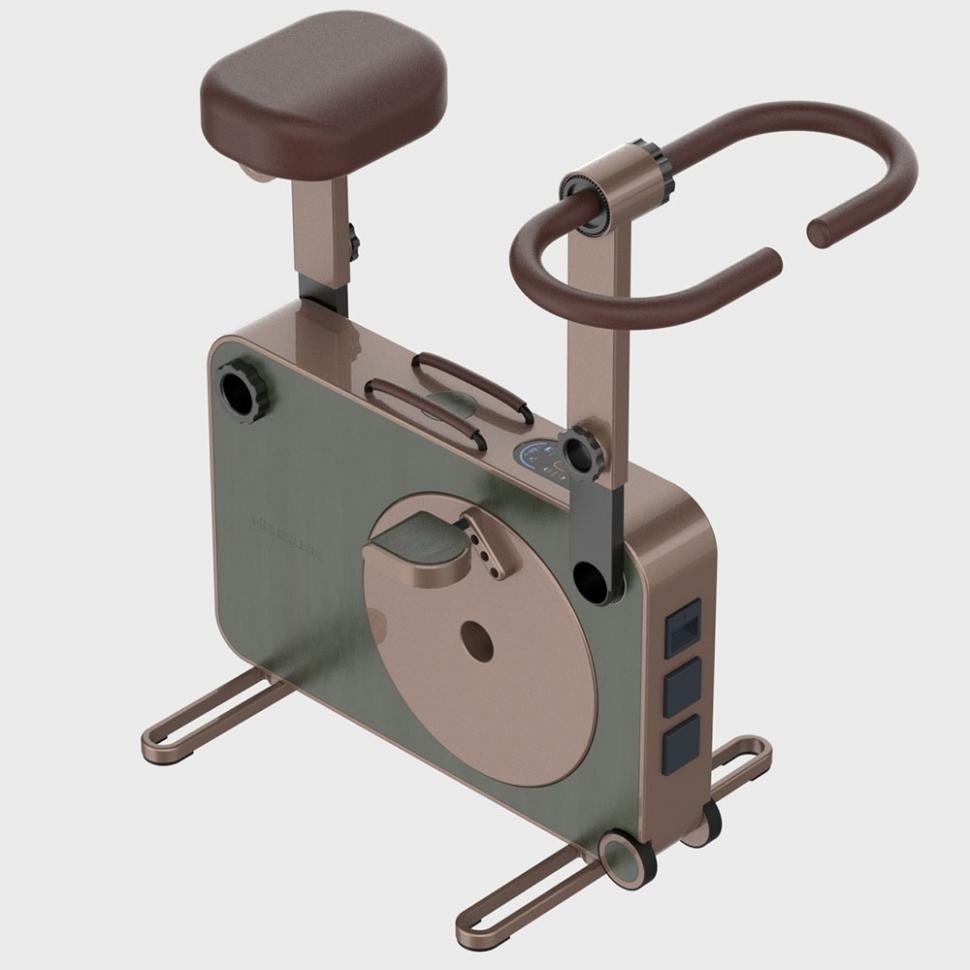



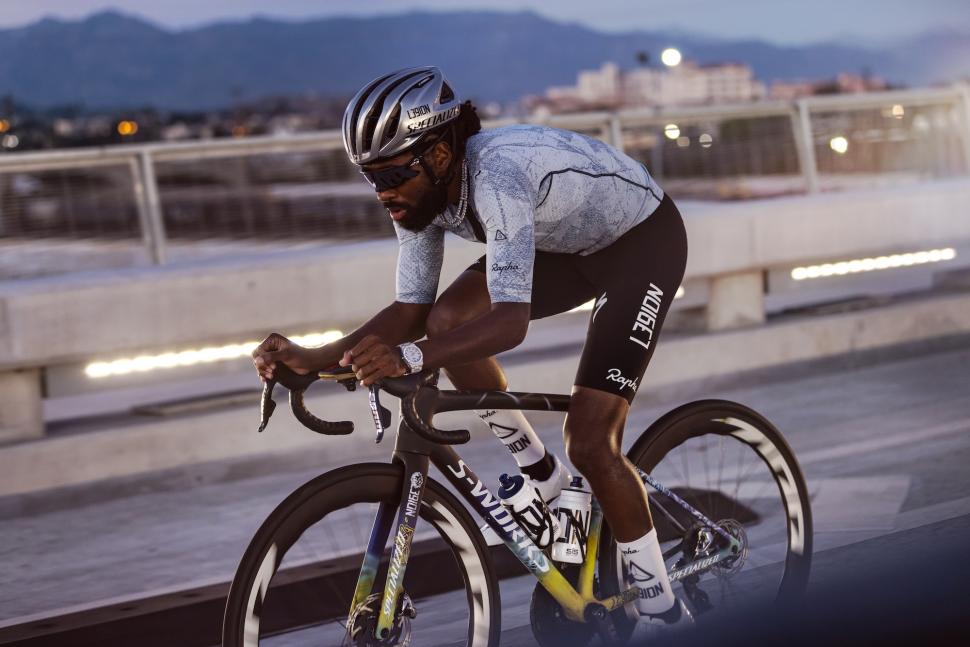
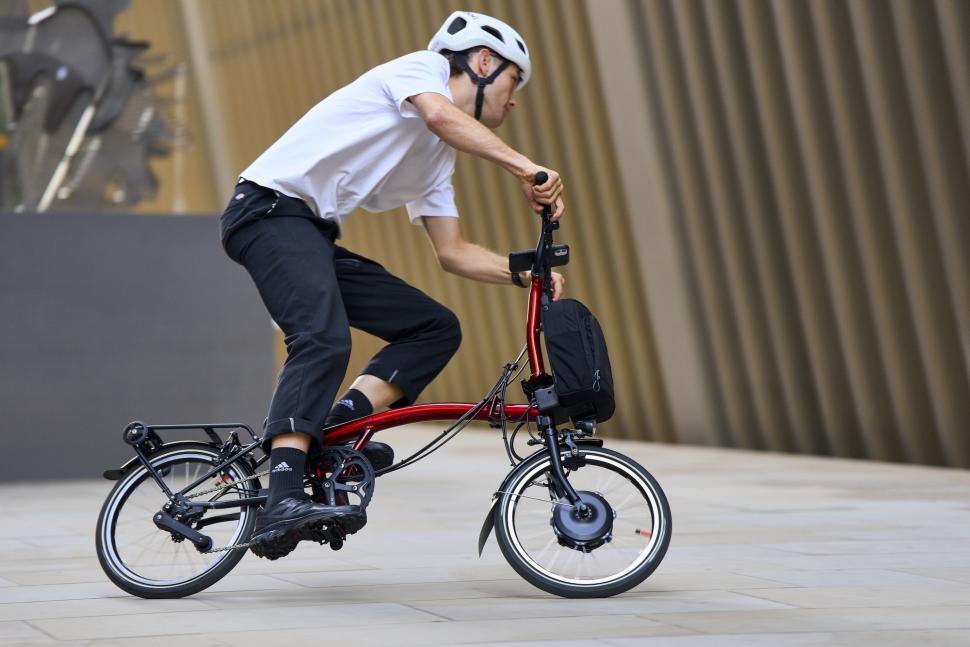

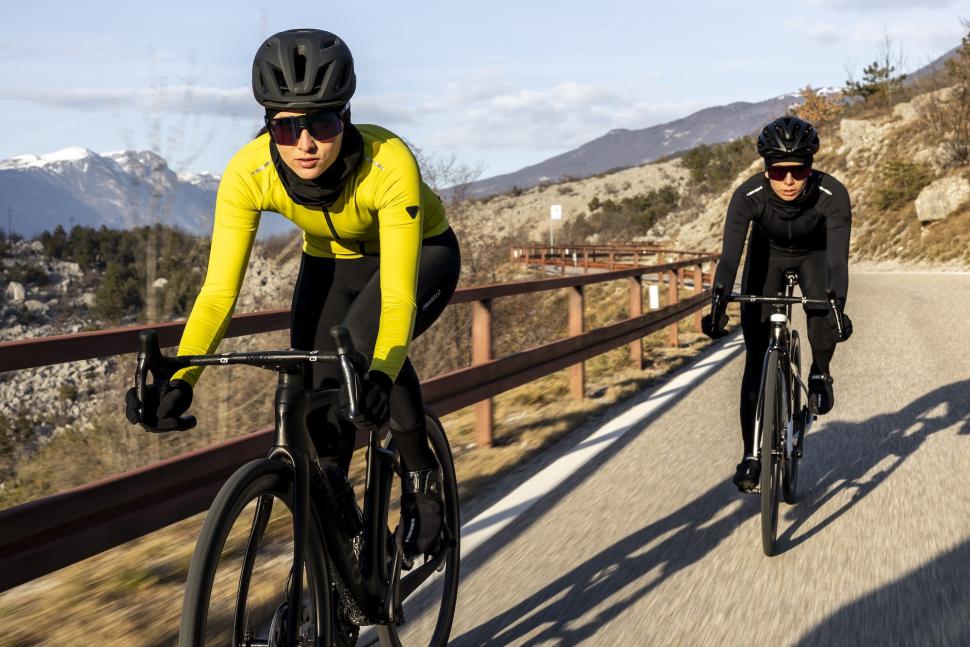
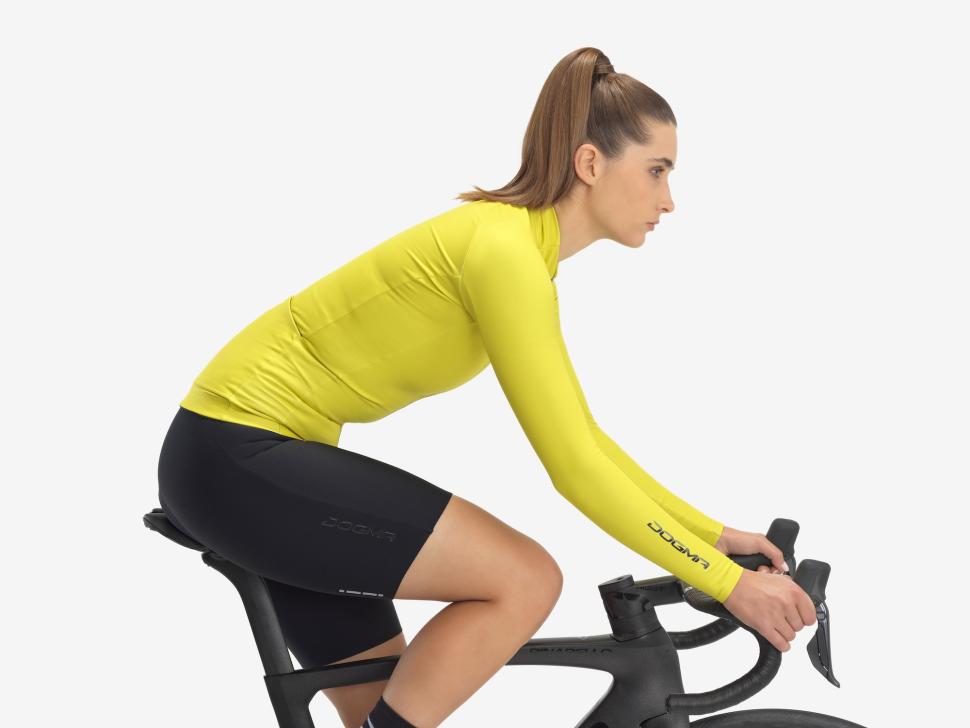

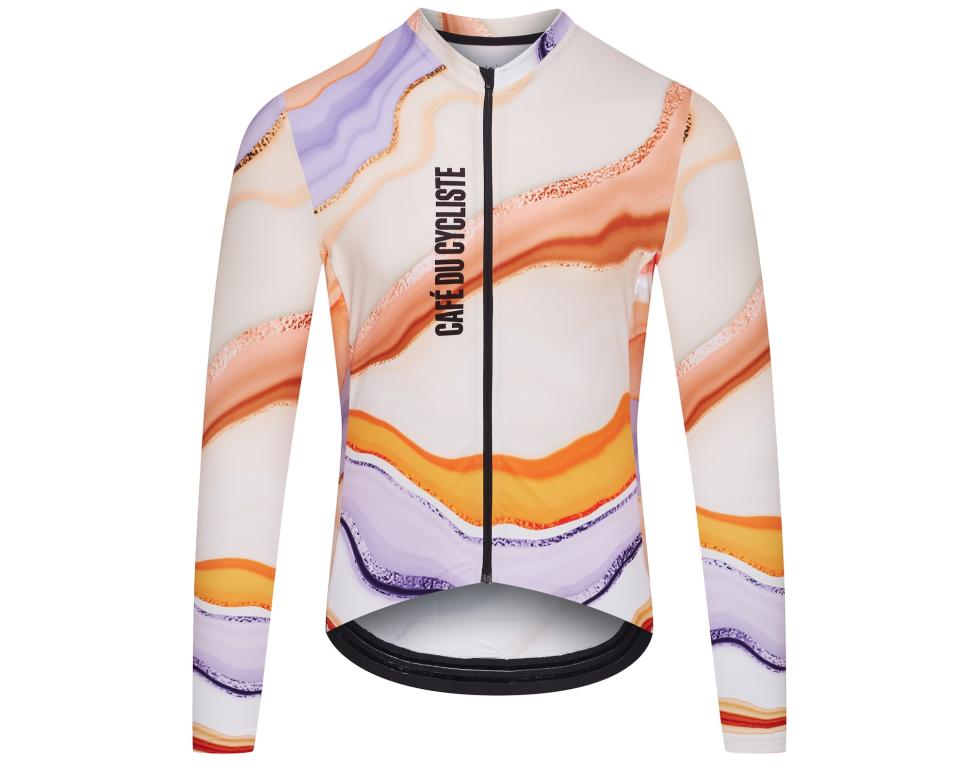
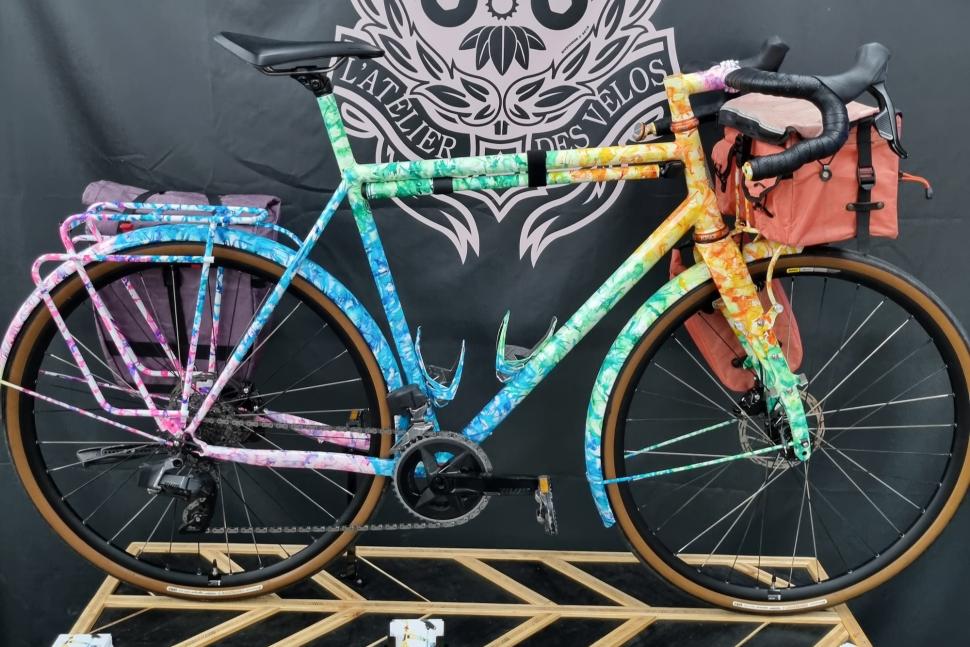

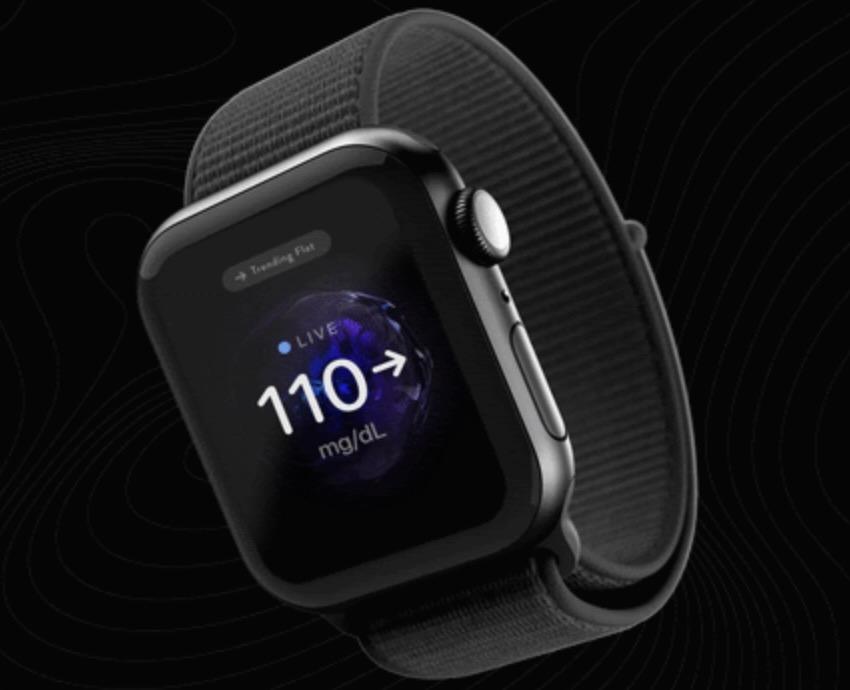
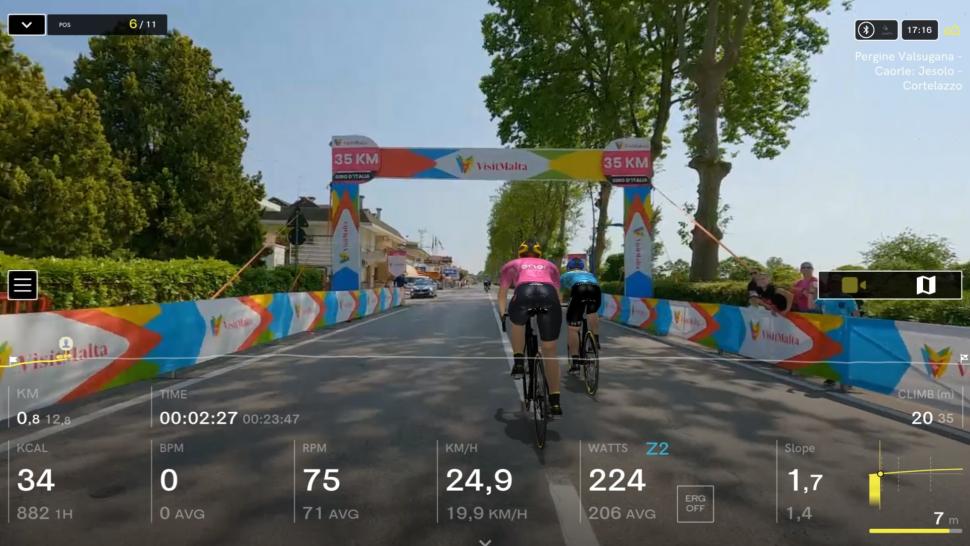
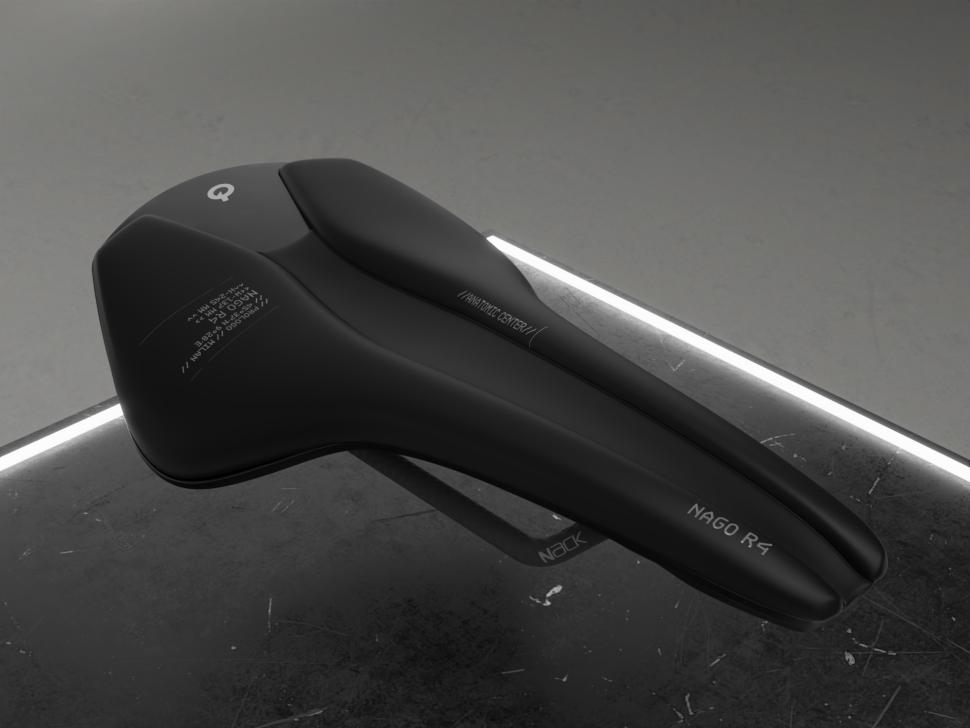


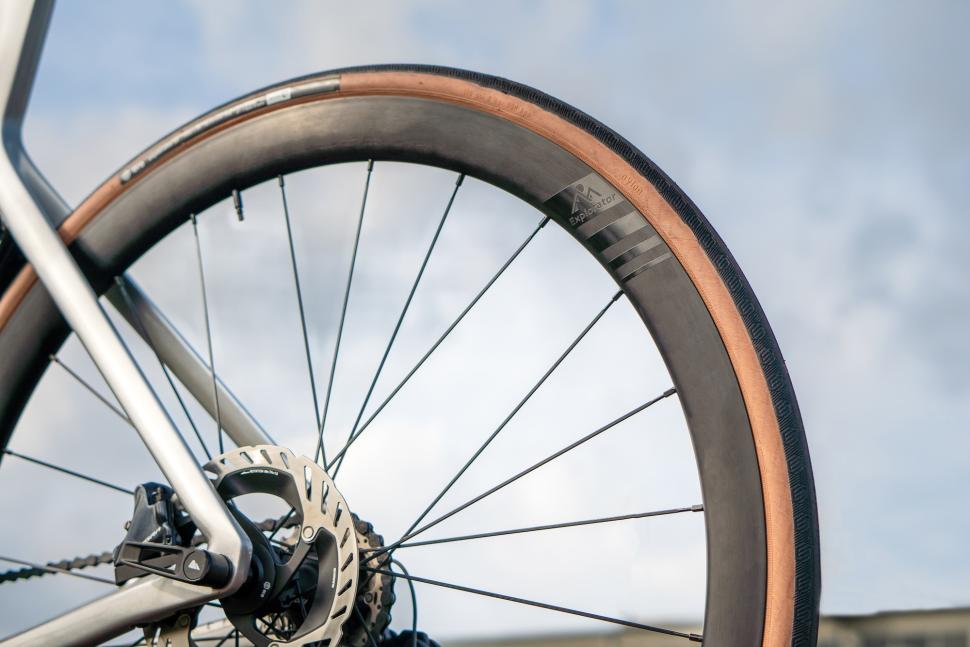
Add new comment
19 comments
139 year payback period.
The K9 (1980s Dr Who) style Exercise Box costs £2600, slightly less than an official E-Brompton, or more than a normal Brompton plus an E-Kit.
£2600 is half of the cost of a standard 4kWp solar installation, installed if you get a decent price.
Or £2600 is the cost of 10,000 kWh of Electricity at 26p per kWh, which at 100W would take 100,000 hours to generate.
100,000 hours is 2 hours a day for 139 years.
Problem in search of a solution.
The solution is not to buy one.
Pedalling at home power?
Shades of Soylent Green.
Wait, do the customers get eaten?
That electric bike reminds me of Manoj Bhargava's electric bike scheme/con: https://www.ecohome.net/guides/1192/60-minutes-on-this-bicycle-can-power-your-home-for-24-hours-or-maybe-not/
Although it seems like a nice idea, the economics just don't stack up as a means of power generation although if you're going to be using a trainer anyway, then you might consider it "free" electricity despite the high cost of the device.
Ultimately, you can use a small solar power cell to out-perform any human-powered device for far less money.
RE trainer generating electricity.
Depends on your focus. (In this case "gimmick" it would seem, not sure many of the prospective customers are eg. living off-grid or worried about the cost of running a fridge...) But presumably this is "training with incidental power generation" at most.
If you genuinely want the motive force then for efficiency it's much better to skip the electrical conversion! Albeit in many places it's much easier to find devices which run off electricity.
Otherwise, you can make your own for fun and cheapness:
https://solar.lowtechmagazine.com/2022/03/how-to-build-a-practical-house...
As alluded to - moving through air on a bike has a massive cooling effect; so much so that overheating tends to be a serious limit on human static cycling as power generation beyond eg a couple of minutes. That might be good if you don't heat your house and it's winter of course. (bonus - you'll need to keep getting on the bike! Your food bill may be eye-opening though...)
The heat off a semi-fit person on an exercise bike is very significant. Circa 1 kW by my calculations, possibly more. Unfortunately lot of moisture too.
Unfortunately, just heat by itself isn't of much use unless you've got a source(?) of cold to make it do some work. Also, the heat coming from a person is generally higher entropy than the food sources that the person consumes (i.e. life is very efficient at increasing entropy externally in order to maintain low entropy within the organism), so you'd be better off just burning the excess food if energy generation is your goal.
You say that, but somewhat north of Bristol you may find there's a use for it in the cold times. Especially if you can send the heating person / persons out to scavenge low-grade food (takeaways) to power them that you wouldn't consume yourself.
Of course you may end up with a different problem if you've got a sensitive nose.
Do you mean Filton?
Aztec West...
People interested in generating electricity during training at a rather lower price might like to look at the JetBlack Whispersmart, I had one a couple of years back (unfortunately it broke during lockdown, clearly due to the massive watts I was pumping through it ho ho, and Sigma didn't have a replacement in stock so I took another model), it uses the power you generate to run itself (very useful if you want to use it away from a power outlet, no extension leads necessary) and has a USB port for charging phones, tablets etc. It didn't offer the power claimed by the device above - I found about an hour at 225W was enough to 3/4 charge an iPhone from empty - but a nice feature and, as above, the removal of the need for a power cord is a real boon if you don't have space for a dedicated pain cave and like to set up in different locations.
It's all very Black Mirror (if you've watched the episode)
Can't find a job? Sat at home all day putting on weight? Well you could work for E-On. Just spend 8 hours a day cycling to keep us producing electricity for the grid.
Don't worry about eating, our tasty range of Soylent green ready meals will keep you bursting with energy while you do your part.
George Orwell saw this coming I'm sure of it.
On the other hand you could turn that on its head and say if you're fed up with being in hock to Big Leccy and having to accept their polluting product, get the family on their bike generators and go off grid!
Yes, the Black Mirror episode did come to mind.
But the general concept of reusing human-produced energy directed to other purposes rather than throwing it into the atmosphere is quite a good one. We have, after all, been doing it for years in heating our houses. It's said that one human going about (or even just sitting, if its a big human) generates about 1 kw each hour in heat. Insulate your house well and .....
So, if you're a "cyclist" who can only "ride a bike" indoors, because you're surrounded by urban jungle with naught but severely pot-holed roads roamed by gangs of vicious bike thieves (e.g. that London) then it would be daft to waste all those "training" watts, not to mention the 2 kw per hour heat probably generated from your sweaty personage. (Perhaps the sweat could also be recyled on your crisps, as you rest later on the sofa)?
On the other hand ..... the use of such machines as the one described (or any other static cycling "trainer") seems indicative of a sad society that's gradually becoming almost entirely virtual. Even now I'm typing to other avatars on a screen rather than chatting to members of the bike club as we go about the real world having real conversations about .... reality. (There's no cycling club I can practically ride with out here in the Welsh hinterlands).
There's an old static bike trainer in the cellar. I last used it 9 years ago post-recovery from a chemo-ragging. I got it 25 years ago on a whim and used it about 3 times before getting utterly unenamoured of the experience so returned to going out in the wet and the wind in winter .....
The resting average for an adult is considered to be 100W, so just 1/10th of a traditional 1 bar electric heater.
Yes, I got the decimal point in the wrong place.
Exercising on a bike could easily be 1 kW of heat, for many. Based on some rough calculations of ranges of plausible drive-train power and metabolic efficiency (on the assumption at least half the drive-train power also ends up as heat - which surely is the case, can't lose that much power in sound).
Cheers Buzz Killington for destroying the humour 😕